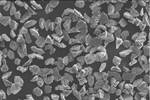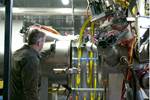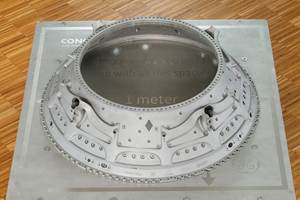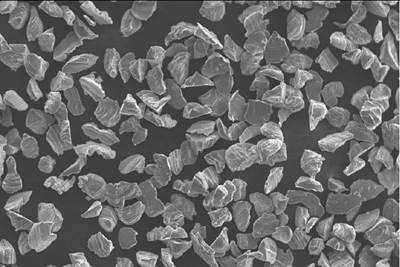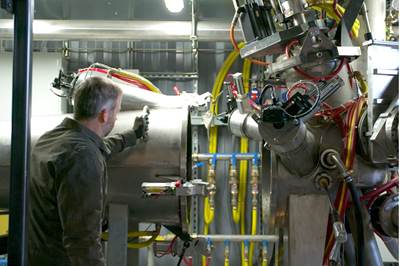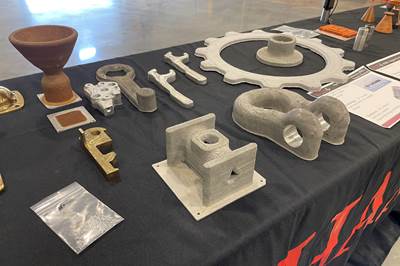Manufacturing the metal powders used in many 3D printing processes typically involves melting the material first, before passing it through a stream of liquid or gas to create solid spheres of material. Melting can take large amounts of energy, and the resulting powder particles can be of varying size so that some over- and undersized powder is often produced alongside the material that is suitable for sale. For materials not needed in great quantities, it may be more cost effective and beneficial to use a manufacturing method that does not require melting it first.
Pittsburgh-based Metal Powder Works (MPW) has developed one method for producing metal powders through a precisely controlled mechanical process. Using a proprietary cutting tool, the company's DirectPowder machines can convert solid, readily available barstock into highly consistent powders suitable for 3D printing. This method and others like it could be a more cost-effective and sustainable way of producing metal powder, and potentially alleviate material handling challenges to deliver powder on demand.
Mentioned in this video:
- Metal Powder Works
- Neighborhood 91, Pittsburgh’s additive manufacturing campus
- HAMR Industries’ application of cold spray AM as an alternative to metal casting
- 6K Additive’s UniMelt process for spheroidizing metal powders
- Preliminary results of a study from the Additive Manufacturing Green Trade Association on Sustainability of powder and wire feedstocks
Transcript
00:00:00:00 - 00:00:24:22
Making metal powders usually involves melting the material first. In a process like atomization, molten metal is passed through a stream of water or a gas like argon, so that it solidifies into spherical particles, which then need to be sieved and divided into different sizes. That melting can take a lot of energy, and you almost always end up with some powder that's too big and some of this too small to be sold, so you're producing a little bit more than you need.
00:00:25:01 - 00:00:39:21
I'm Stephanie Hendrixson with Additive Manufacturing Media, and I recently learned about a company that is manufacturing metal powders with no melting whatsoever. The company is called Metal Powder Works or MPW, and I visited their facility in Pittsburgh, Pennsylvania, located at Neighborhood 91.
00:00:40:01 - 00:00:45:14
Metal Powder Works has developed a method for turning solid metal into powder without a phase change.
00:00:45:14 - 00:00:51:16
In their Direct Powder process, the material stays solid throughout and mechanically is turned into metal powder.
00:00:51:19 - 00:01:18:05
To do this, they use what is essentially a highly controlled lathe. Solid off-the-shelf barstock goes in and the machine very precisely chips away material using a proprietary cutting tool. There is waste that's generated with this process. There are material cores and chips that come off which can be recycled, but the key is that almost all the powder that is produced is very similar in size, so you're not ending up with a lot of unusable or out of sized powder at the end.
00:01:18:05 - 00:01:25:03
Powder made in this way does look and behave a little bit differently, namely because it is angular rather than spherical.
00:01:25:03 - 00:01:28:16
In some 3D printing processes this doesn't seem to matter a whole lot.
00:01:28:16 - 00:01:49:20
Metal Powder Works provides material for instance to its neighbor at Neighborhood 91, HAMR Industries. HAMR uses a cold spray process, a machine from Spee3D to produce metal parts, often as casting replacements. And they're finding that this angular powder can be used without any difficulty. It may also change the behavior of certain other types of processes.
00:01:50:01 - 00:02:15:09
Metal Powder Works has reason to believe that this angular powder in a material like copper, could actually be easier to process with laser powder bead fusion. Of course, in cases where roundness is really important, there are ways to further process this material. MPW has partnered with 6K Additive, another Pennsylvania-based company that has developed a process for spheroidizing metal particles called UniMelt and that is compatible with this angular material as well.
00:02:15:09 - 00:02:27:15
So what are the benefits to being able to mechanically produce metal powders like this? One, it's potentially a cost savings, especially if you're dealing with an unusual alloy or very small amounts of material.
00:02:27:15 - 00:02:35:18
If you're not producing tons and tons of material, gas atomization may not be worth it. It could be more economical to choose a milling process like this one.
00:02:35:18 - 00:02:49:04
Second, it could be more sustainable. As a recent study from the Additive Manufacturing Green Trade Association suggests, milling processes like this can actually have a smaller carbon footprint compared to other types of powder production.
00:02:49:09 - 00:03:09:18
There may also be benefits specific to this particular solution from Metal Powder Works. The machine that they have designed and manufacture is small enough to be placed at an additive manufacturing facility or deployed out in an expeditionary situation to manufacture powder on location. That is important because it helps to alleviate a lot of the challenges of powder handling.
00:03:10:00 - 00:03:21:23
Instead of storing metal powder that has to be protected from things like static and humidity, you can store and ship solid barstock, which is widely available in a whole range of different alloys and materials.
00:03:22:02 - 00:03:38:07
If you want to learn more about Metal Powder Works or anything else mentioned in this video, see the links in the video description below. And if you're interested in more AM materials, technology, and applications, subscribe to Additive Manufacturing Media. We'll put a link in the show notes as well. Thanks for watching.
Related Content
GE Additive Helps Build Large Metal 3D Printed Aerospace Part
The research is part of an initiative to develop more fuel-efficient air transport technologies as well as a strong, globally competitive aeronautical industry supply chain in Europe.
Read MoreVideo: AM for Harder, Longer-Lasting Brake Discs
Additive manufacturing is being applied to limit automotive brake dust. For a major automaker, Etxetar and Talens are developing a production-speed directed energy deposition system to give brake discs a precise layer of wear-resistant carbide.
Read MoreAlquist 3D Looks Toward a Carbon-Sequestering Future with 3D Printed Infrastructure
The Colorado startup aims to reduce the carbon footprint of new buildings, homes and city infrastructure with robotic 3D printing and a specialized geopolymer material.
Read MoreEvaluating the Printability and Mechanical Properties of LFAM Regrind
A study conducted by SABIC and Local Motors identified potential for the reuse of scrap reinforced polymer from large-format additive manufacturing. As this method increases in popularity, sustainable practices for recycling excess materials is a burgeoning concern.
Read MoreRead Next
Affordable 3D Printing Powders Made from Barstock, No Melting Required
DirectPowder, a proprietary technique from Metal Powder Works, transforms solid metal or polymer into 3D printable powder. The solution promises distributed production of both materials and parts, even in the field.
Read MoreSustainable Metal Powder Company Addresses Next Piece of Road Map: Renewable Energy
Continuum Powders, the material production arm of small-scale foundry technology company MolyWorks, has announced new partnerships aimed at further reducing the environmental impact of its metal powder production.
Read MoreNeighborhood 91 Expands, With Metal Powder Works and HAMR Now Open
Ribbon cuttings for the Pittsburgh campus's newest tenants coincided with the announcement that a DOD-funded resilient manufacturing program will also be developed at the site.
Read More

.jpg;width=70;height=70;mode=crop)
